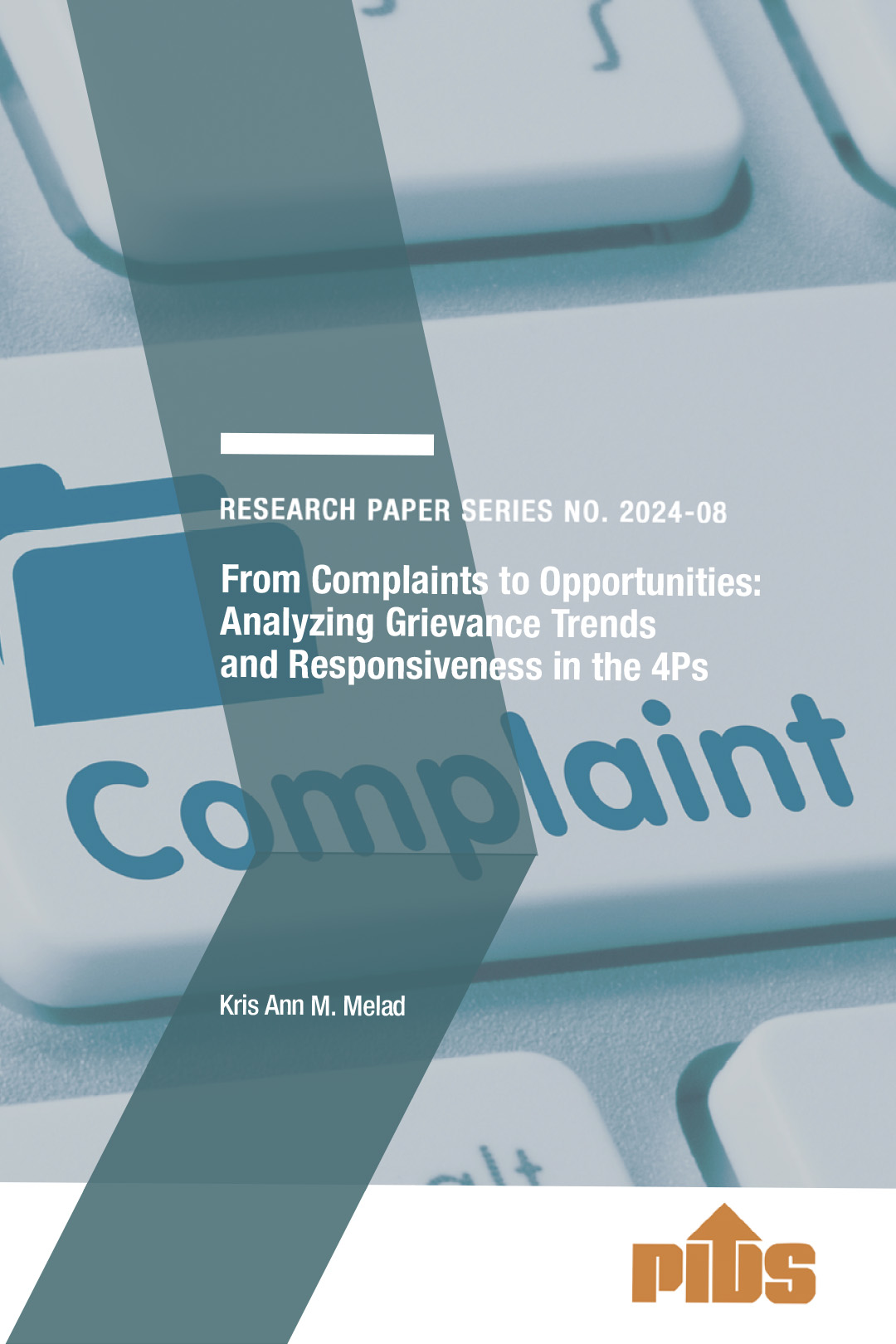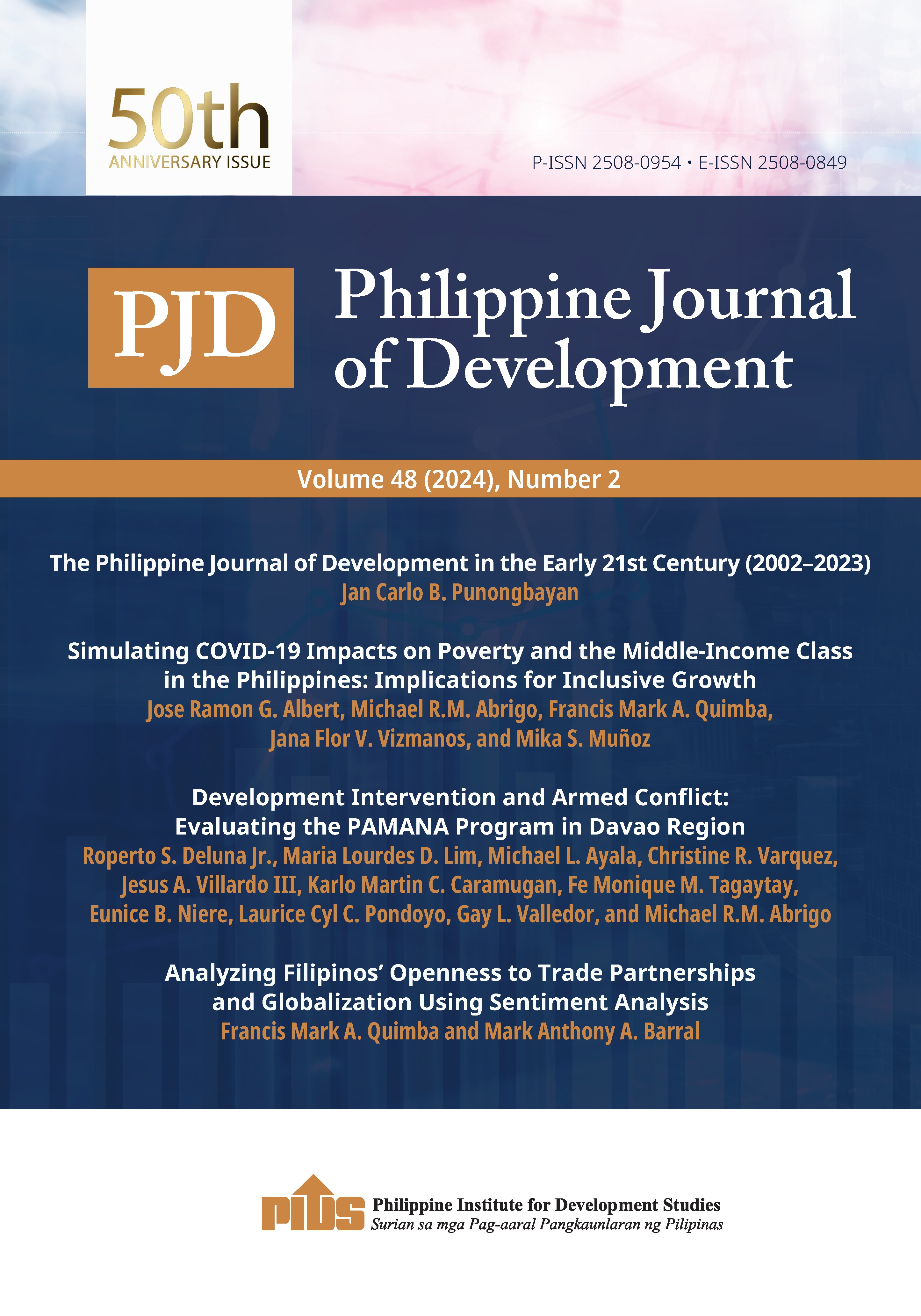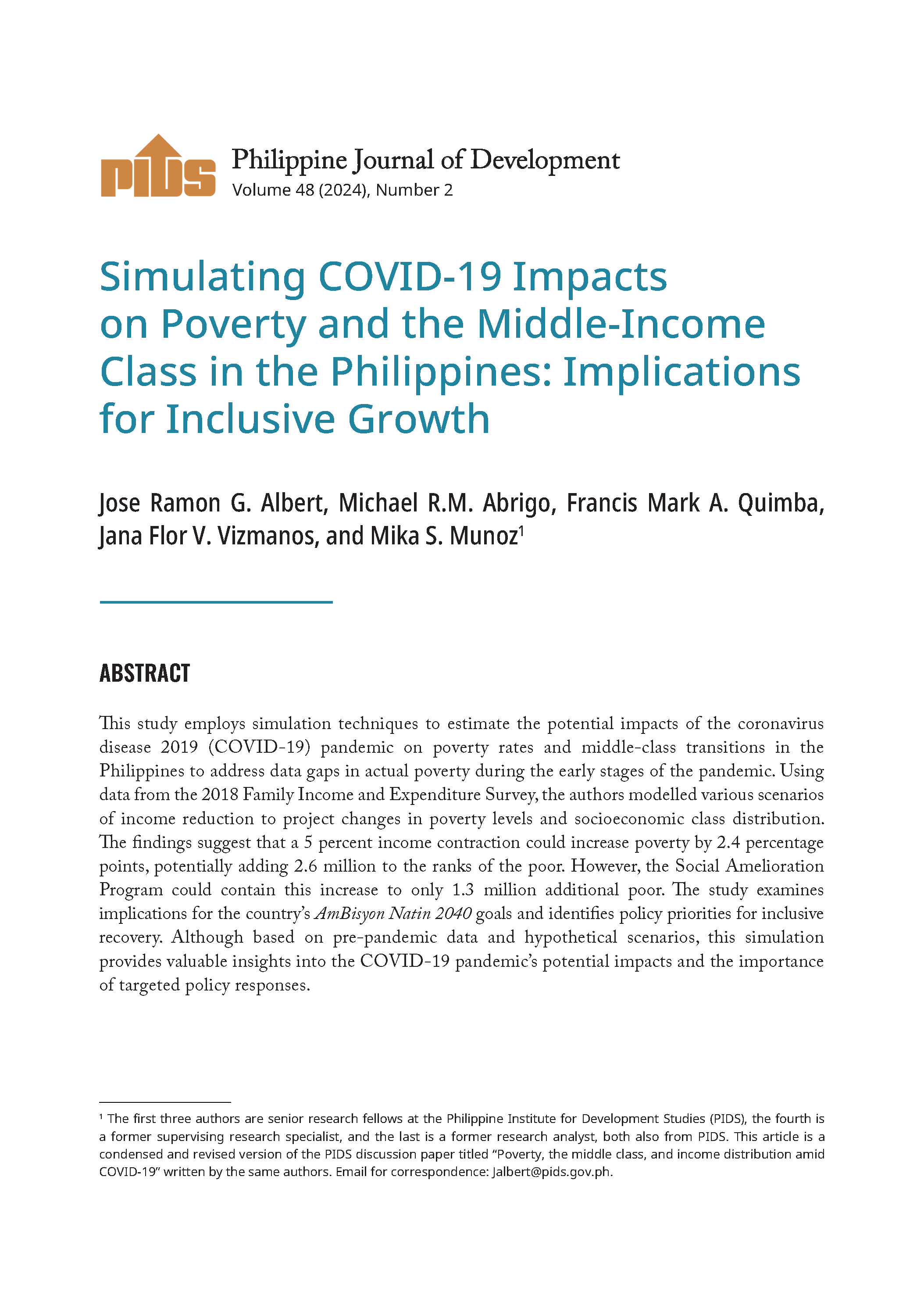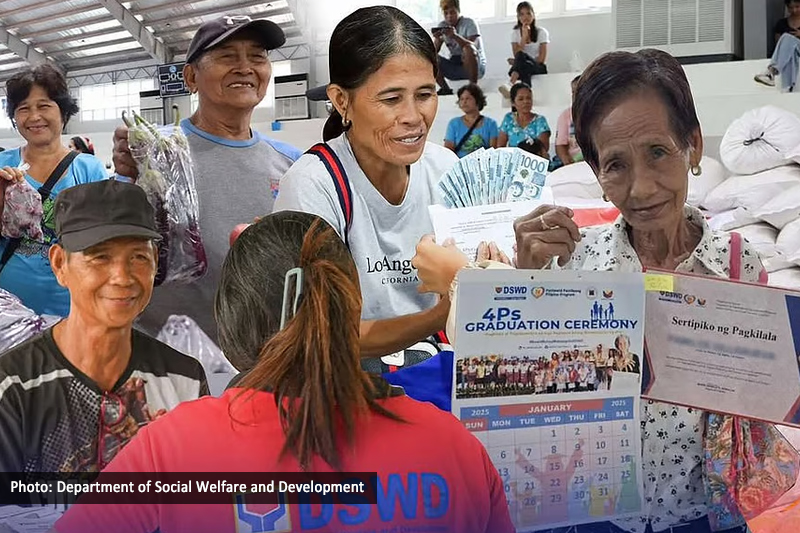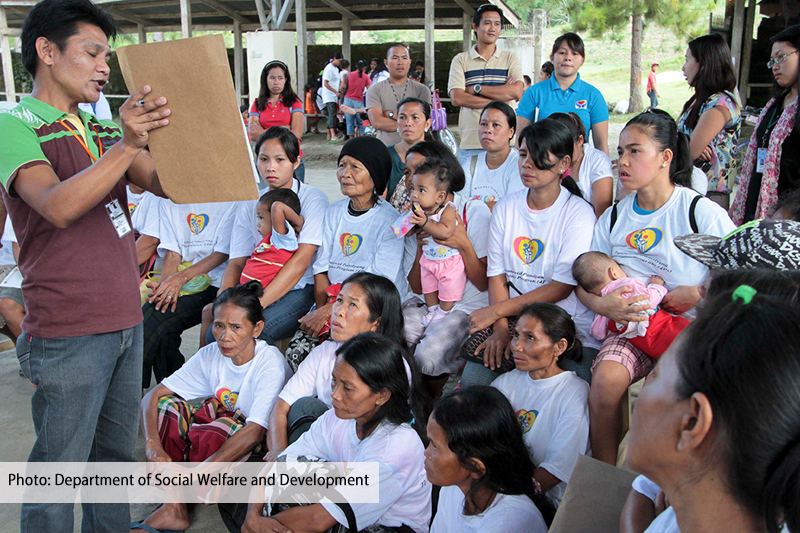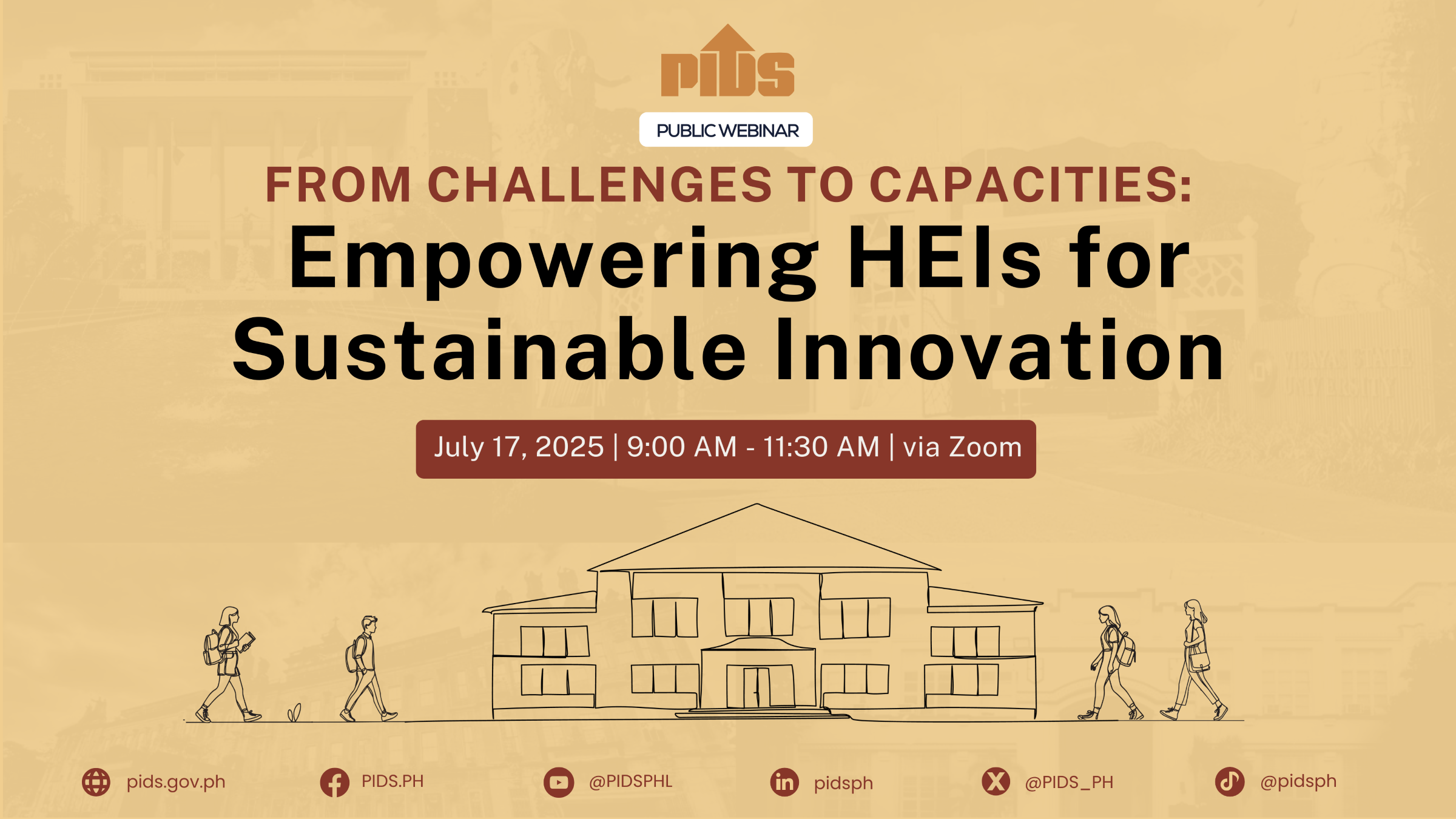Four in every 10 Filipino households have remained or slipped into poverty at least once in a period of three years, latest study by state think tank Philippine Institute for Development Studies (PIDS) revealed. PIDS Supervising Research Specialist Christian Mina and Senior Research Fellow Celia Reyes assessed Filipinos’ vulnerability to poverty, or the probability of being poor in the future, using data from the Family Income and Expenditure Survey (FIES) for the period 2003 to 2009.Their findings showed that even those who have not experienced poverty or the non-poor may still fall into it in the future.According to the study, natural disasters, together with other shocks, were believed to have largely contributed to the vulnerability of Filipino households to poverty.Mina and Reyes disclosed that vulnerable households, regardless of whether poor or not, were more susceptible to unobservable idiosyncratic, like birth, injury or accident, among others, than covariate shocks like natural disasters, human or animal epidemic, economic crises, etc.The study also revealed that eight in every 10, or 77.4 percent, poor households were classified as vulnerable.A household is considered vulnerable if its estimated vulnerability to poverty is below the vulnerability threshold, the authors explained.Based on the data, majority of nonpoor but vulnerable households were predicted to be poor only in at most two periods from 2010 to 2012, thus tagged as relatively vulnerable, and were more susceptible to idiosyncratic shocks.Many of the households were more vulnerable to idiosyncratic shocks probably because of the latter’s direct and more specific impacts,” the PIDS researchers said.In terms of profile, Mina and Reyes found that vulnerable households, even the nonpoor, most likely reside in rural areas and have less-educated heads.The vulnerable and chronic poor households “tend to have younger and less-educated heads, higher dependency ratio, live in rural areas, and lack access to irrigation.Meanwhile, the vulnerable but not chronic poor households, lack access to major transport infrastructure and employment security. Thus, even if households were initially non-poor, they can fall into poverty for lack of access to transport infrastructure or irrigation facilities.According to the PIDS study, Caraga and Zamboanga Peninsula had the highest proportion of vulnerable households while the never poor households were concentrated in the neighboring regions of the National Capital Region, Central Luzon and CALABARZON.To address poverty issues, the authors urged government to invest more in education.Mina and Reyes also proposed for the improvement of the agricultural sector by developing agri-based industries to increase employment, providing support to high-value commodities, an enhancing small farmers’ access to format credit.Likewise, the authors recommended for a stronger implementation of laws promoting entrepreneurship and the provision of technical and financial assistance to potential entrepreneurs, as well as financial management education of Filipino households.
4 of 10 Pinoy households vulnerable to poverty – PIDS

